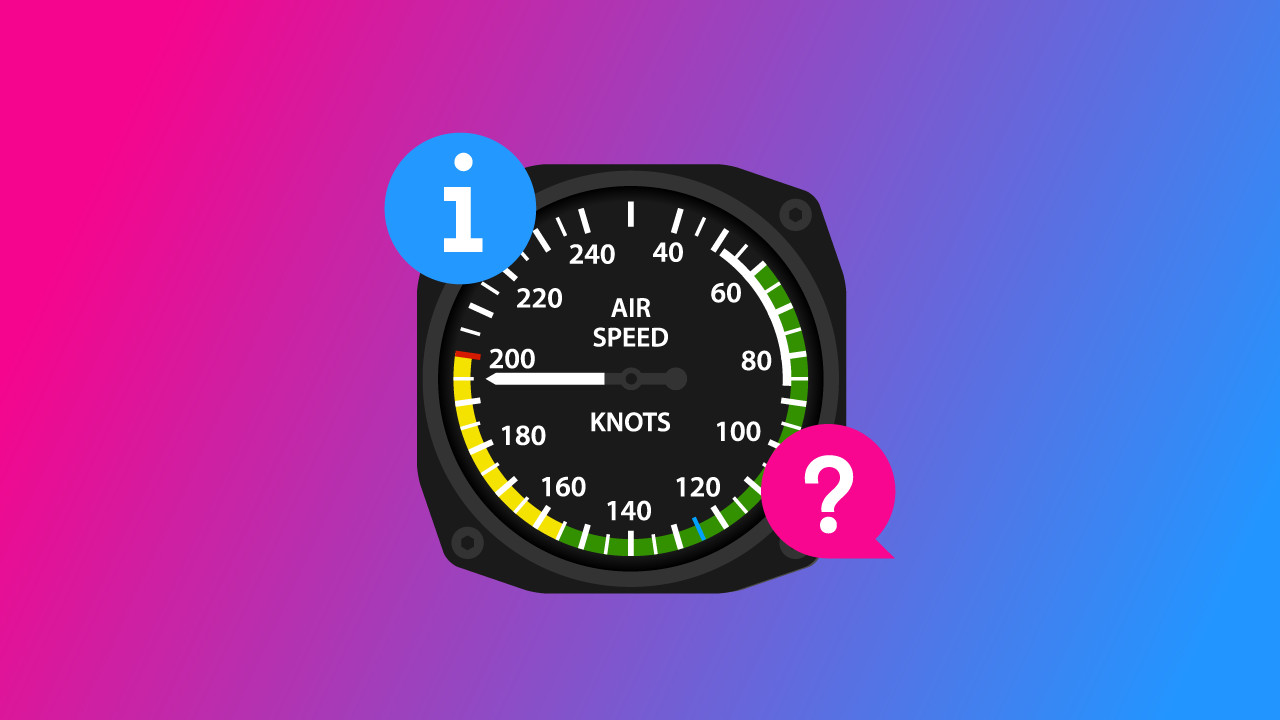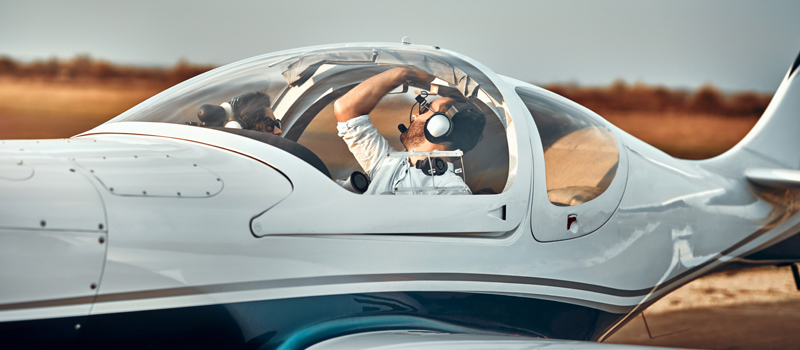-
Pressurization, the Atmosphere, and why Oxygen is Important
-
Why and When is Aircraft Pressurisation Required?
- Physiological Effects
- Pressurization is a Legal Requirement
-
How Does Air Pressure Vary with Altitude?
-
How Are Airplanes Pressurized?
- The Compressor – Jet Engines
- Compressors – Turboprops
- The Pressure Hull
- The Outflow Valve
-
Are All Aircraft Pressurized?
- Can You Fly Higher than 10,000 Feet Unpressurized?
-
What is 'Cabin Altitude'?
-
Conclusion
Ok, let’s all take a deep breath. Regardless of the altitude, this should be possible. Why? Because of the aircraft pressurization system! Humans are not naturally supposed to spend long periods at high altitudes, so we need a little help to survive. Here’s why we need aircraft pressurization and how it works.
In general, aircraft pressurization systems introduce compressed engine air into a sealed section of an airplane, called a ‘pressure hull’. Pressure is maintained by controlling how much air is introduced and released to maintain favorable conditions for the human respiratory system.
To truly understand how pressurization works, we need to understand a little physics about how gas (especially our atmosphere) behaves under pressure. Don’t worry, it’s pretty easy!
Pressurization, the Atmosphere, and why Oxygen is Important
While many will say that the ‘air’ we breathe is oxygen, this isn’t technically true. In fact, oxygen isn’t the most prominent gas in our atmosphere at all!
Here’s what the ‘air’ we breathe is made up of in order of its prevalence: –
- Nitrogen: 78%
- Oxygen: 21%
- Other gases (such as Carbon Dioxide, Argon, Methane): 1%
The human body uses the oxygen in this atmosphere to feed the brain and other tissues. Without oxygen, our brain, muscles, and organs very quickly cease to function. When our body is starved of oxygen, this condition is called hypoxia. It can degrade cognitive function severely in a very short time.
Want to see how bad it can get?
Here’s a quick video of people being decompressed and asked to perform simple tasks… Hypoxia is really dangerous!
Why and When is Aircraft Pressurisation Required?
There are two reasons why aircraft need pressurization systems. The first is very obvious based on the above. A reduction in air pressure leads to significant physiological effects.
The second reason? It is actually a legal requirement for certain aircraft. You can read more about these below.
Physiological Effects
In short, a pressure drop caused by a rise in altitude produces three effects, none of which are pleasant for the human body. These are: –
- A reduction in the amount of usable oxygen
- Physical effects as a result of differing pressures inside and outside of the body
- A drop in temperature
Let’s take a look at each of these in a little more detail…
Usable Oxygen
You may also be surprised to learn that there is the same percentage of oxygen at altitude as at sea level.
At 20,000ft, the ‘air’ is still 21% oxygen and 78% nitrogen.
So why do we need pressurization?
Because of the reduced pressure, there are fewer molecules in a given air volume. You’ll see from our table below that at 18,000ft, the air pressure is half that of sea level.
Without going too deep into scientific theory and the law of partial pressures, what this means is that your body is only getting half of the oxygen it would at sea level. For the reasons we described above, this isn’t a good thing.
Physical Effects of Lower Pressures
Ever been on a flight and noticed your bag of chips swell up?
This is because the pressure inside the bag is at sea level, and the pressure outside the bag is lower.
And here’s the thing.
The same thing happens inside any area of your body that holds gas. This includes your gut, sinuses, and even your ears (which is why they ‘pop’ when you descend).
Being decompressed for long periods can be extremely uncomfortable and even dangerous. Burst eardrums are no laughing matter!
Temperature
As the air pressure drops with altitude, so does the temperature.
By how much?
You can work on a loss of about 2 degrees Celsius per 1000ft.
While that not might sound a lot, if you consider that most commercial jet airliners cruise at 35,000 feet. That’s a loss of about 70 degrees! Chilly!
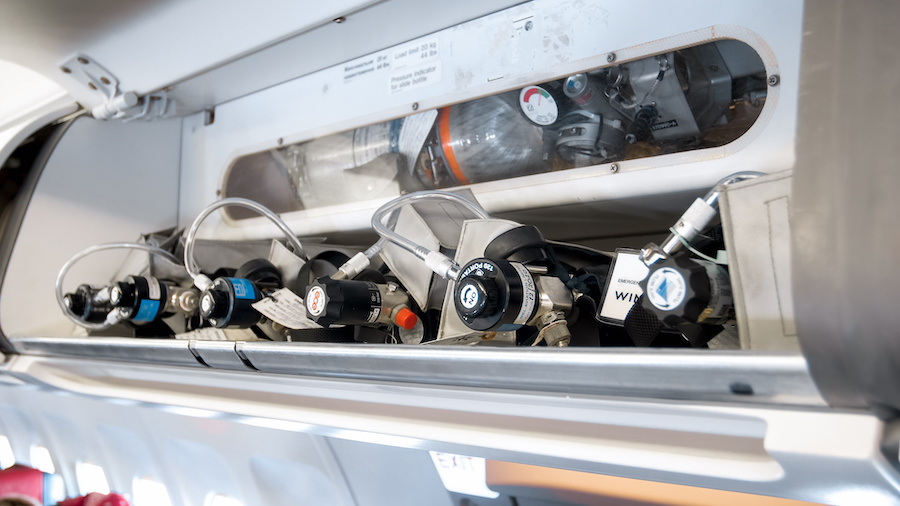
Pressurization is a Legal Requirement
The Federal Aviation Administration mandates supplemental oxygen above certain flight altitudes (usually above 10,000ft).
These rules regarding oxygen use are located in: –
- CFR 14 Part 91 – Giving details of flight rules, and is generally applicable to aircraft not operating commercially.
- CFR 14 Part 135 – This section details what operators have to do and are more geared towards commercial operations.
Here are the requirements: –
Cabin Altitude |
Rule |
| 12,500 – 14,000ft (unpressurized) | Supplemental oxygen is required by the pilots for flight durations longer than 30 minutes |
| 14,000 – 15,000ft (unpressurized) | Supplemental oxygen continuously required by the pilots for flights at this altitude |
| 25,000ft+ (pressurized) | 10 minutes supply of supplemental oxygen is required for every occupant to enable an emergency descent |
| 35,000ft+ (pressurized) | Pilots need a quick donning mask that can be positioned in 5 seconds with one hand. Also needs both pilots to be sat at the controls. |
| 41000ft+ (pressurized) | Pilots must be on continuous oxygen at all times. |
Why the differences in time?
It’s quite simple. As you go higher in the atmosphere, the air pressure drops. The lower the air pressure, the less time of useful consciousness you have. At 40,000 feet, you have about 20 seconds maximum before you would pass out from hypoxia…
This is why the masks must be of the ‘quick donning’ type at altitude or worn permanently!
How Does Air Pressure Vary with Altitude?
Here’s a quick table showing how air pressure and temperature change with altitude. Look at the temperatures and pressure. You’ll see that it doesn’t take a particularly high altitude for things to become very uncomfortable.
Altitude (in feet) |
Pressure (psi) |
Temperature (C) |
| 30,000 | 4.4 | -45 |
| 28,000 | 4.8 | -40 |
| 26,000 | 5.2 | -36 |
| 24,000 | 5.7 | -32 |
| 22,000 | 6.2 | -28 |
| 20,000 | 6.8 | -24 |
| 18,000 | 7.3 | -20 |
| 16,000 | 8.0 | -16 |
| 14,000 | 8.6 | -12 |
| 12,000 | 9.4 | -8 |
| 10,000 | 10.1 | -4 |
| 8000 | 10.9 | 0 |
| 6000 | 11.8 | 4 |
| 4000 | 12.7 | 8 |
| 2000 | 13.7 | 12 |
| 0 | 14.7 | 15 |
At around 10,000ft, the air will be below freezing, and even healthy people may start to notice the effects of hypoxia.
Based on all of the above, we need a solution to fly at altitude. That solution is the aircraft pressurization system. Here’s how it works…
How Are Airplanes Pressurized?
Aircraft pressurization systems generally have 3 main components combined. They are: –
- The pressure hull – This is a well-sealed container made up of the fuselage walls, floor, ceiling, and doors. It is normally pretty airtight, so air can’t readily escape.
- A compressor – This is how air is added to the cabin. A valve allows high-pressure air taken from a stage in the engine to be introduced to the cabin.
- An outflow valve – Too much pressure can be a bad thing, so we also need a way to let a little air out from time to time. The outflow valve opens and closes in stages to regulate the pressure in the aircraft.
How does it all work together?
Airplanes are pressurized using a fairly simple concept.
To get a good general idea, imagine placing your thumb over the end of a bicycle pump and depressing the plunger. Provided you have a tight seal, you will feel pressure on your thumb. This is because air is being forced in by the plunger and can’t escape. The pressure inside the cylinder has been increased.
Remember this simple concept, as aircraft pressurization systems work exactly the same way.
- The pump plunger = the compressor
- The cylinder = the pressure hull
- Your thumb = the outflow valve
By regulating how hard you press the plunger, you control how much air is going into the cylinder. By moving your thumb, you control how much air is escaping. If you could do this super accurately, you could maintain an even pressure by balancing the two out. This is precisely how an aircraft pressurization system works.
Obviously, there is no plunger and certainly no thumb. Let’s see what they really look like: –
The Compressor – Jet Engines
When discussing jet engines, you’ll hear the compressor referred to in a few ways. Terms such as ‘air cycle machine’ and simply ‘packs’ are very common.
Modern jet engines work by compressing air, adding fuel, and igniting it. The hot gases are exhausted out of the back, pushing the aircraft along.
The aircraft pressurization system steals a little bit of this air before fuel is added (thankfully).
This air is actually extremely hot, so it is ducted into the packs where it is made to expand and cool down slightly. From there, and using some clever valves, it is ducted into the cabin. The packs also control the air temperature and introduce cooler ambient air.
Compressors – Turboprops
The principle behind turbocharged propellor-driven aircraft is practically identical to that of jet engines. The only real difference is that some systems use something called a ‘sonic venturi’ instead of valves.
A venturi is a tube that gets progressively narrower. In the case of turboprop aircraft, this limits the amount of air that can enter at a given time.
The Pressure Hull
We refer to this as the ‘pressurized’ section of the aircraft. The easiest way to envisage it is simply as an airtight tube. Air can’t escape, and even the doors are sealed. Areas that are pressurized include: –
- The cabin
- The cockpit
- The toilets
- The cargo holds
Areas that are not pressurized include: –
- The wheel bays
- The tail cone
- The radome (the nose of the aircraft)
The Outflow Valve
The outflow valve is vital to controlling pressurization (after all, it is easier to take the air out than put it in).
This is normally a hole located around the tail area with a pair of sealable doors. When these doors are fully open, lots of air can escape. When they are closed, no air can escape. Generally, these doors are partially open and constantly move to regulate the airplane to a given pressure.
Are All Aircraft Pressurized?
Not all aircraft are pressurized. Generally, only aircraft certified to fly above 10,000 feet need pressurization systems. Any operation below this altitude means that the air is sufficiently dense to allow most healthy people to breathe.
Jet airliners and commercial turboprops are much more efficient at higher altitudes; therefore, they must have a functioning aircraft pressurization system.
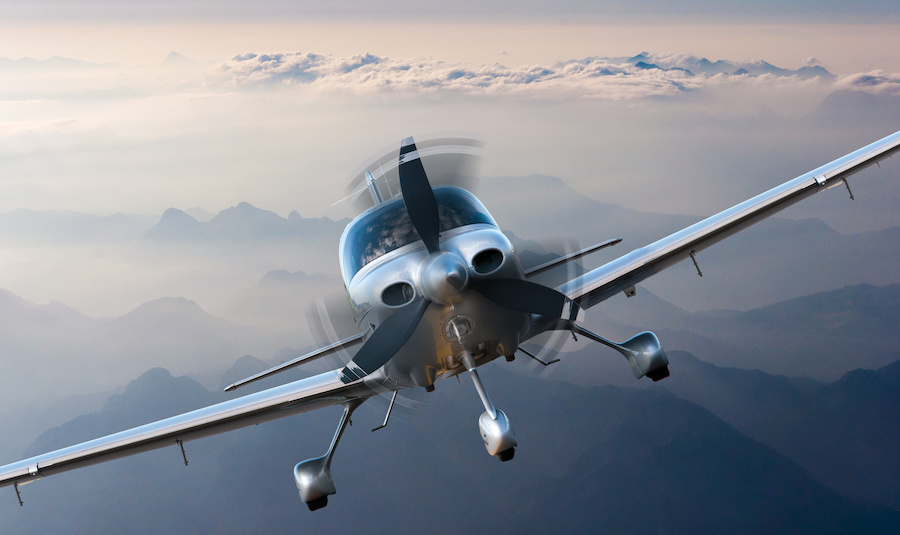
Can You Fly Higher than 10,000 Feet Unpressurized?
Absolutely. Provided you stick to the rules given by the FAA in CFR 14 chapter 91 and 135, you can fly higher than 10,000 feet. But to do so (both legally and safely), you will need supplemental oxygen.
The type used by most general aviation pilots is portable gaseous oxygen systems.
This is simply a small bottle and isn’t an integral part of the aircraft design or structure. They look quite similar to the type used by emergency medics and first responders. They consist of 4 basic parts: –
- A bottle – to safely store and hold the oxygen
- A regulator – Used to control the flow provided
- A mask – Normally attached held over the nose and mouth with an elasticated strap
- A pressure gauge – This allows you to quickly assess the quantity of oxygen remaining.
What is ‘Cabin Altitude’?
Cabin altitude is the term given to the air equivalent air pressure inside the aircraft at a given time. If the cabin altitude is, say, 4000 feet, then this simply means that the air pressure is the same as standing on a mountain at 4000 feet.
Normal commercial aircraft normally aim to maintain a cabin altitude of around 7000 feet (hence why your bag of chips swells up).
Why do they do this?
It’s all to do with something called a pressure differential. Essentially, this is the difference between the air pressure inside the aircraft and the world outside.
By moving the air pressure inside the aircraft a little closer to the pressure outside, the pressure hull is placed under slightly less stress, as it has a lower differential. Consider it a little like this. Suppose you were constantly inflating and deflating a balloon. Would it last longer if you blew it up fully every time (a high pressure differential) or only inflated it halfway (a lower pressure differential)?
When pressure hulls are overinflated, very bad things happen.
Conclusion
Generally, aside from occasionally popping ears, most people won’t notice the aircraft’s pressurization (that’s a good thing, it means it is working!). However, airplanes aren’t pressurized to sea level but to cabin altitude.
While vital in aircraft that fly at high altitudes, aircraft pressurization systems are simple in concept. High-pressure air is ‘bled off’ from the engines and introduced into the cabin before being released out of the outflow valve. This increases the pressure in the cabin, preventing any ill effects from being at altitude.
Next time your bag of chips inflates on a flight, you’ll now know why!
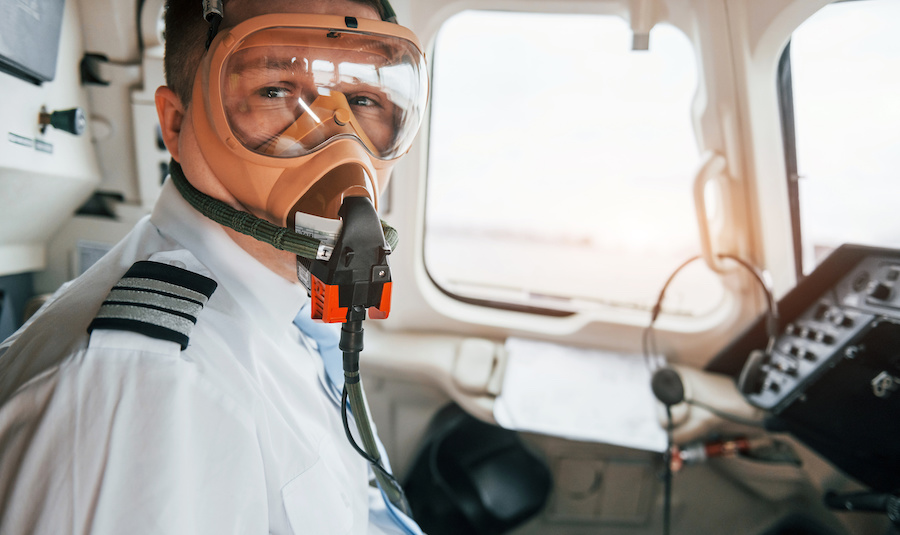
 @pilotinstituteairplanes
@pilotinstituteairplanes
